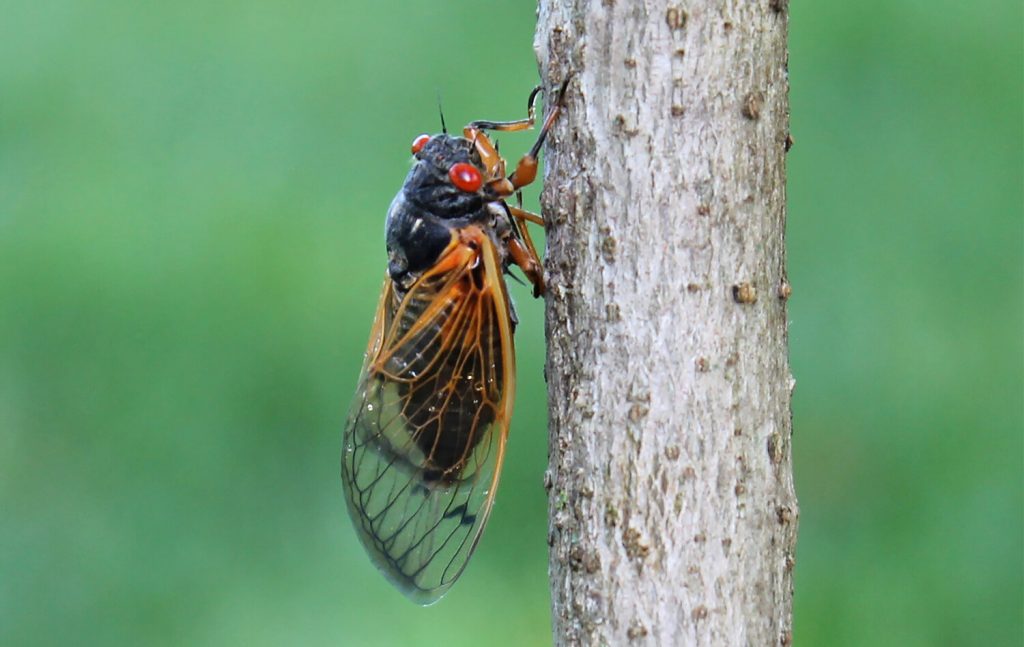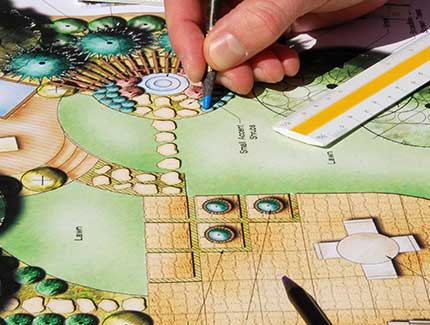Gear up for the song of the cicadas! 2021 is a big year for the big bugs, as we are expecting a spring/summer showing of the 17-year Brood X cicadas. Join us for a quick biology lesson and we will tell you how these cicadas could impact your landscaping and the best remedy against damage.

Brood X cicadas are large, winged insects known for their size and appearance – a 3-inch wingspan on a black insect with large red eyes – and their extra loud sound. The insects themselves are harmless to humans but can affect trees and shrubs. Brood X cicadas live underground for 17-years in nymph form feeding on sap from tree roots. When it is time to reemerge, the nymphs will burrow up to the surface and appear where the last generation of cicadas dropped their eggs 17 years ago. Isn’t nature cool? USA TODAY tells us more about how the cicadas know when to resurface: “Their mass, in-unison emergence every 17 years to one nature’s great mysteries.” We agree!
The cicadas wait for a beautiful spring day, when the soil temperature is exactly right – they are picky little buggers – to emerge synchronously from the ground. In our region, this is expected to happen in mid-May to early June, according to the Washington Post’s Capital Weather Gang. They are likely to come up around the bases of tree trunks or along hedges. They will climb up on the nearest branch, building, outdoor structures, and molt – so you’ll see lots of cicada “shells” or exoskeletons – before they mate. The loud buzz comes from the male cicada as he looks for a partner. After mating, the female cicada will lay eggs inside of young twigs and branches and the process by which she does this can kill the branch. Since the Brood X cicadas come in a population size into the millions, this could pose a problem for your landscaping. Usually vegetable garden and annual flowers aren’t affected because their stems are not strong enough to hold an egg nest, but you will want to be mindful of small and young trees and shrubs.

Spraying pesticides would eventually kill the cicadas, but this NOT a recommended practice. Cicadas are beneficial to the environment. Plus, the amount of pesticide you would need is obscene. You might be successful in killing the cicadas but also everything else in your yard. Not an option!
The only true remedy is to install landscape mesh or bags over trees, especially young ones, from May through mid-July. You should keep an eye on young, small, weak trees for broken branches and flagging, clusters of brown leaves indicating where a nest was laid. Flagging wont necessarily kill a tree, unless it was already vulnerable, but it something to watch. The cicadas might actually do you a favor by naturally pruning the weakest, dead, or dying limbs on your otherwise healthy trees.
While the 17 year Brood X cicadas are large and loud, at least they don’t bite or have an interest in escaping into your home or office. So install those landscape nets and sit back to enjoy the wonders of nature! Maybe with a set of ear plugs! And remember, it will be another 17 years before one will be able to see and hear the Brood X cicadas so live in the now and be grateful to witness Mother Nature at work.


